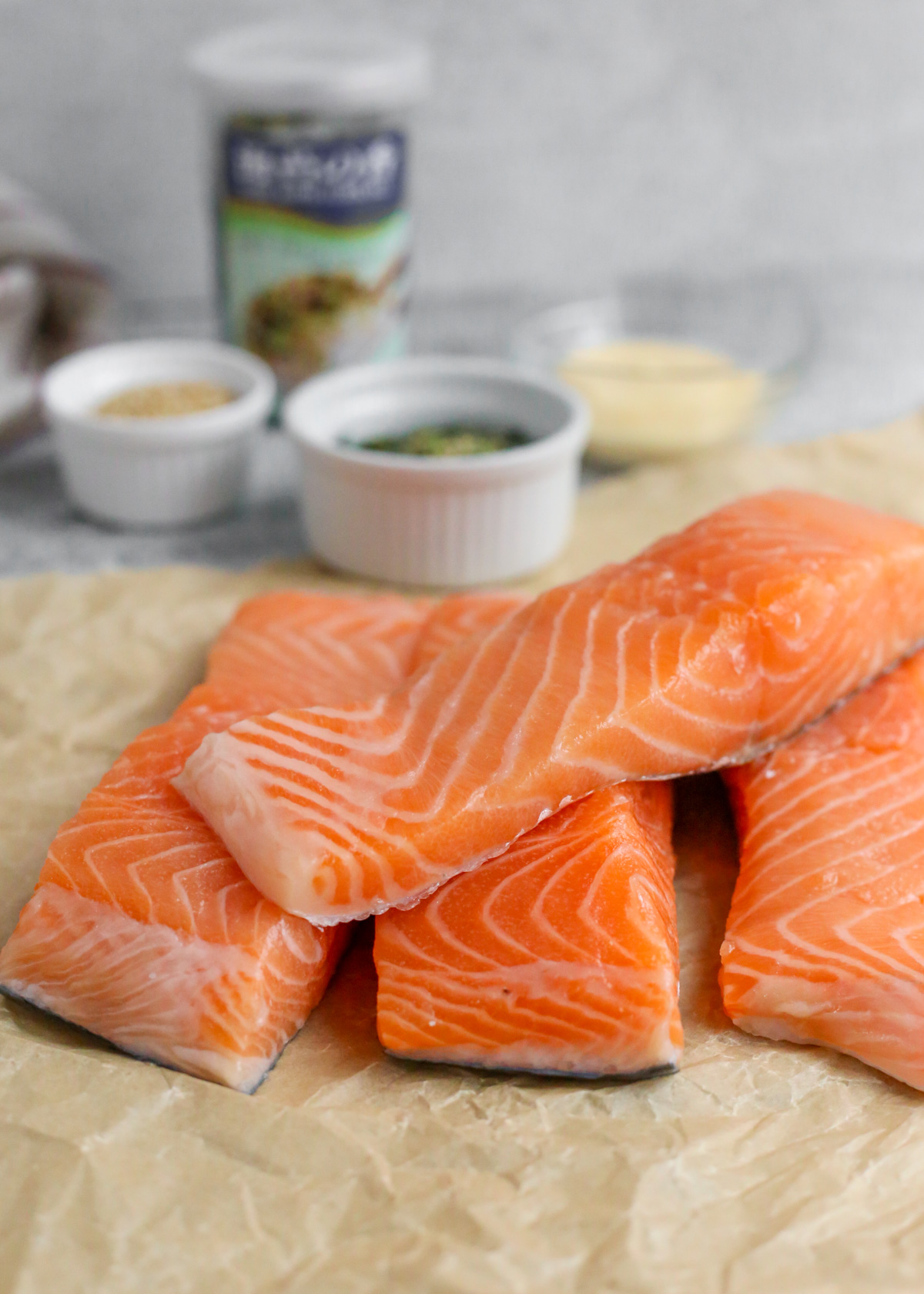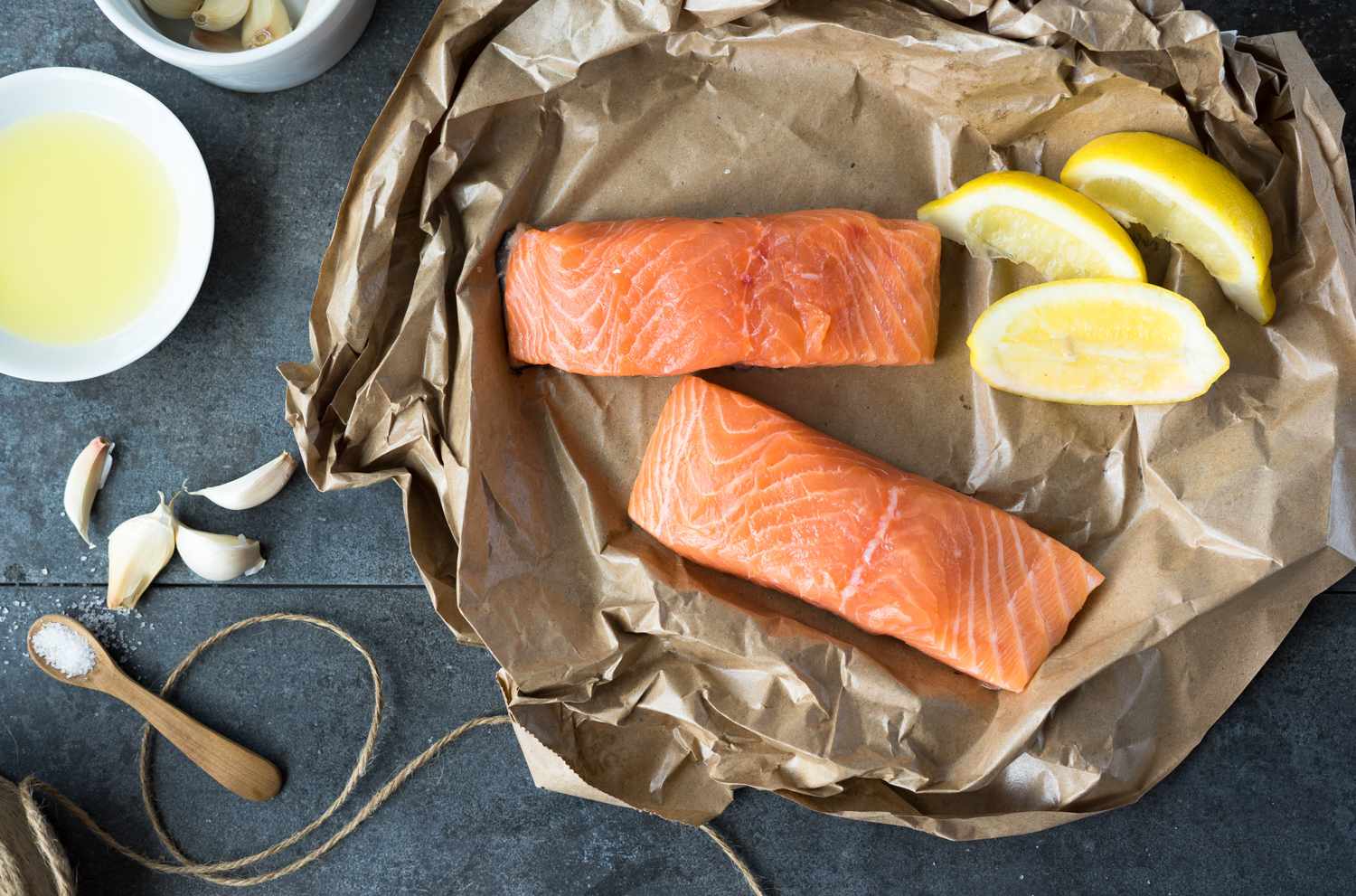Fresh Salmon Vs Frozen Salmon: An Overview

Fresh salmon and frozen salmon are two popular options for seafood lovers. Fresh salmon is obtained directly from the source and has not undergone any freezing process. It is known for its superior taste and texture, making it a preferred choice for many. On the other hand, frozen salmon is processed and frozen to preserve its freshness. While it may lack the same level of freshness as fresh salmon, it offers convenience and longer shelf life. When deciding between the two, factors such as convenience, availability, taste, and nutritional value should be considered.
A What Is Fresh Salmon?
Fresh salmon refers to salmon that has not undergone any freezing process and is obtained directly from the source, such as rivers, lakes, or the ocean. It is considered to have superior taste and texture compared to frozen salmon. Fresh salmon is known for its vibrant color, firm flesh, and distinct flavor. It is often favored by seafood enthusiasts and chefs for its freshness and ability to be cooked in a variety of ways. However, it is important to note that the quality and freshness of fresh salmon may vary depending on how it is handled, stored, and transported.
B What Is Frozen Salmon?
Frozen salmon refers to salmon that has been subjected to a process of freezing to preserve its quality and extend its shelf life. This involves rapidly freezing the salmon at a very low temperature, typically below -18 degrees Celsius (-0.4 degrees Fahrenheit). Freezing not only helps to maintain the freshness of the salmon, but it also inhibits bacterial growth and preserves the nutritional value. Frozen salmon is available year-round and offers convenience in terms of storage and availability. However, it is important to properly thaw and handle frozen salmon to ensure the best quality and taste.
Storage Options For Salmon

When it comes to storing salmon, there are different options to consider depending on whether you have fresh or frozen salmon. Fresh salmon should be stored in the refrigerator at a temperature below 40 degrees Fahrenheit. It is best to consume fresh salmon within 1-2 days of purchase. On the other hand, frozen salmon can be stored in the freezer at a temperature below -18 degrees Celsius. Properly packaged frozen salmon can last for up to 3 months in the freezer without significant loss of quality. It is important to follow safe storage practices to ensure the best quality and taste of the salmon.
A Proper Storage For Fresh Salmon
Fresh salmon should be stored in the refrigerator at a temperature below 40 degrees Fahrenheit (4 degrees Celsius). It is important to keep the salmon wrapped tightly in plastic wrap or aluminum foil to prevent exposure to air and prevent drying out. If the salmon was purchased pre-packaged, it can be stored directly in its original packaging. However, if it was purchased from a fish market or is already opened, it should be placed in a clean container before refrigeration. It is best to consume fresh salmon within 1-2 days of purchase to ensure optimal freshness and quality.
B Proper Storage For Frozen Salmon
When it comes to storing frozen salmon, it is important to keep it at a temperature of 0 degrees Fahrenheit (-18 degrees Celsius) or below. It is best to store frozen salmon in an airtight container or freezer bag to prevent any freezer burn. Label the container with the date of freezing to keep track of its shelf life. When thawing frozen salmon, it is recommended to do so in the refrigerator overnight or under cold running water. Avoid thawing salmon at room temperature, as it can promote bacterial growth. Always cook thawed frozen salmon immediately to ensure optimal taste and quality.
Quality Factors Of Fresh Salmon

Fresh salmon is valued for its high nutritional content and superior taste and texture. Here are the key quality factors to consider when choosing fresh salmon:
- Nutritional Value: Fresh salmon is an excellent source of omega-3 fatty acids, which are beneficial for heart health. It is also rich in protein, vitamins, and minerals.
- Taste: Fresh salmon has a delicate flavor and a buttery, tender texture. It is often preferred by chefs and seafood enthusiasts for its natural sweetness and richness.
- Appearance: Fresh salmon has vibrant pink or orange flesh, with a glossy and moist appearance. It should have a clean scent, free from any fishy odors.
- Freshness: High-quality fresh salmon should be firm to the touch and free from any sliminess. It should also have bright, clear eyes and gills that are a deep red color.
By considering these quality factors, you can ensure that you are enjoying the best tasting and nutritionally rich fresh salmon.
A Nutritional Value Of Fresh Salmon
Fresh salmon is highly regarded for its exceptional nutritional value. It is packed with essential nutrients that contribute to a healthy diet. Fresh salmon is particularly rich in omega-3 fatty acids, which are known for their anti-inflammatory properties and benefits for heart health. Additionally, it is an excellent source of high-quality protein, vitamins, and minerals, including vitamin D, vitamin B12, selenium, and potassium. These nutrients support various bodily functions, including brain health, immune function, and muscle growth. Incorporating fresh salmon into your diet can be a great way to enhance your overall nutrition and well-being.
B Taste And Texture Of Fresh Salmon
Fresh salmon is widely known for its delicious taste and delicate texture. The flavor of fresh salmon is often described as rich, buttery, and slightly sweet. It has a distinct seafood taste that is both flavorful and satisfying. In terms of texture, fresh salmon has a firm yet tender flesh that easily flakes apart when cooked. It is moist and succulent, making it a delightful choice for sushi, grilling, baking, or pan-searing. The natural texture of fresh salmon enhances the overall dining experience and adds a luxurious touch to any dish.
Quality Factors Of Frozen Salmon

Frozen salmon undergoes a freezing process that helps to preserve its quality and freshness. This freezing process can effectively kill any bacteria or parasites present in the fish, making it safe for consumption. Frozen salmon also maintains its nutritional value while in storage, with essential omega-3 fatty acids and proteins intact. The texture of frozen salmon may be slightly firmer compared to fresh salmon, but it still offers a satisfying taste and flaky texture when properly cooked. Overall, frozen salmon provides a convenient and reliable option for those looking to enjoy the benefits of salmon without the need for immediate consumption.
A Nutritional Value Of Frozen Salmon
Frozen salmon has excellent nutritional value, making it a healthy choice for consumers. It is rich in omega-3 fatty acids, which are essential for brain health and reducing the risk of heart disease. Frozen salmon is also a good source of high-quality protein, providing all the essential amino acids needed for proper body function. Additionally, it contains vitamins and minerals such as vitamin D, vitamin B12, selenium, and potassium. The freezing process does not significantly affect the nutritional content of salmon, ensuring that it retains its health benefits even during storage.
B Taste And Texture Of Frozen Salmon
Frozen salmon maintains a similar taste and texture to fresh salmon when properly cooked. The freezing process helps to preserve the moisture and tenderness of the fish, allowing it to retain its natural flavors. However, it is important to note that the texture of frozen salmon may be slightly different from fresh salmon, with a slightly firmer texture. Nonetheless, with proper cooking techniques, such as thawing the fish before cooking and using appropriate seasonings, frozen salmon can still deliver a delicious and satisfying culinary experience.
Comparing Fresh And Frozen Salmon

When comparing fresh and frozen salmon, there are a few key factors to consider.
In terms of convenience and availability, fresh salmon is typically more readily available at local fish markets and grocery stores. However, frozen salmon can be easily stored for longer periods of time, allowing for greater flexibility in meal planning.
From an environmental standpoint, frozen salmon is often a more sustainable option. The frozen seafood industry relies on efficient harvesting and modern freezing techniques, which can help reduce waste and preserve the quality of the fish.
Ultimately, the choice between fresh and frozen salmon will depend on personal preferences, meal planning needs, and environmental considerations.
A Differences In Convenience And Availability
When it comes to convenience and availability, there are some notable differences between fresh and frozen salmon. Fresh salmon is typically more readily available at local fish markets and grocery stores. It offers the advantage of immediate consumption, allowing you to enjoy the fish right away. On the other hand, frozen salmon provides greater flexibility in terms of meal planning. It can be easily stored for longer periods of time, allowing you to have salmon on hand whenever you want. This can be particularly beneficial for those who have busy schedules or limited access to fresh seafood.
B Environmental Impact And Sustainability
When considering the environmental impact and sustainability of fresh and frozen salmon, frozen salmon tends to have a lower carbon footprint. This is because frozen salmon can be transported in bulk, reducing the need for frequent shipments and minimizing transportation emissions. Additionally, freezing salmon helps to reduce food waste by extending its shelf life. On the other hand, fresh salmon often requires more frequent shipments and has a shorter shelf life, increasing the carbon emissions associated with transportation and the risk of food waste. Therefore, choosing frozen salmon can be a more sustainable option in terms of reducing greenhouse gas emissions and minimizing food waste.
Conclusion

In conclusion, when comparing fresh salmon to frozen salmon, both options have their advantages and considerations. Fresh salmon offers a delicate taste and texture, as well as the availability of locally caught seafood. On the other hand, frozen salmon provides convenience, a longer shelf life, and a lower carbon footprint. To make an informed choice, it is important to consider factors such as nutritional value, taste preferences, convenience, and environmental impact. Ultimately, the decision between fresh and frozen salmon depends on individual preferences and priorities.
A Factors To Consider When Choosing Between Fresh And Frozen Salmon
When deciding between fresh and frozen salmon, there are several factors to consider.
- Availability and Convenience: Fresh salmon is often more readily available, especially in coastal areas. However, frozen salmon can be conveniently stored for a longer period of time, allowing for meal planning and reducing trips to the grocery store.
- Taste and Texture: Fresh salmon has a delicate taste and firm texture, which some people prefer. On the other hand, frozen salmon may have a slightly different texture but can still offer a delicious flavor.
- Nutritional Value: Fresh salmon typically contains higher levels of certain nutrients, such as omega-3 fatty acids and vitamin D. However, frozen salmon can still provide essential nutrients and is a convenient way to incorporate fish into a balanced diet.
- Environmental Impact: Frozen salmon has a lower carbon footprint compared to fresh salmon, as it can be transported and stored more efficiently. Choosing sustainably sourced salmon, whether fresh or frozen, can help reduce the environmental impact.
Considering these factors, individuals can make a decision based on their preferences, lifestyle, and priorities.
B Recommendations For Salmon Storage And Quality
To ensure optimal storage and quality of both fresh and frozen salmon, there are some recommendations to follow.
- Proper Storage: Fresh salmon should be stored in the refrigerator at temperatures below 40°F (4°C) and consumed within 1 to 2 days. Frozen salmon should be stored in the freezer at temperatures below 0°F (-18°C) and consumed within 3 to 6 months.
- Packaging: For fresh salmon, it is recommended to keep it in its original packaging or store it on a bed of ice to maintain its freshness. Frozen salmon should be tightly wrapped in freezer-safe packaging to prevent freezer burn.
- Thawing: When thawing frozen salmon, it is best to do so gradually in the refrigerator overnight or by using the defrost function on a microwave. Avoid thawing at room temperature to minimize bacterial growth.
- Quality Assessment: Before consuming salmon, ensure that it smells fresh and has a firm texture. Discard any salmon that has a strong fishy odor, slimy texture, or discolored flesh.
Following these recommendations will help preserve the quality and flavor of both fresh and frozen salmon.
FAQ About Fresh Salmon Vs Frozen Salmon: Considering Storage Options And Quality
Q: What are the main differences between fresh and frozen salmon?
A: Fresh salmon is typically caught and sold within a few days, offering a delicate texture and flavor. Frozen salmon is usually flash-frozen shortly after being caught to preserve its freshness for a longer time.
Q: How should fresh salmon be stored?
A: Fresh salmon should be kept refrigerated at temperatures below 40°F (4°C) and consumed within 2-3 days of purchase for optimal freshness.
Q: How long can frozen salmon be stored?
A: Frozen salmon can be stored for up to 3-4 months in the freezer without significant loss of quality. Proper packaging is important to prevent freezer burn.
Q: Does frozen salmon lose nutrients during the freezing process?
A: While fresh salmon may contain slightly higher levels of certain nutrients, frozen salmon retains a good amount of its nutritional value due to the quick freezing process.
Q: Can frozen salmon be used for sushi or sashimi?
A: High-quality frozen salmon can be used for sushi or sashimi if it has been appropriately frozen to kill any potential parasites. It’s essential to purchase sushi-grade frozen salmon from a reputable source.
Q: Is there a significant taste difference between fresh and frozen salmon when cooked?
A: When cooked properly, many people find it challenging to distinguish between the taste of fresh and high-quality frozen salmon. The freshness of the fish and the cooking method play key roles in the final taste.

Welcome to Braddock Bay Tavern & Grill, where history, delicious cuisine, and stunning views come together to create an unforgettable experience. Our restaurant, situated on the picturesque edge of Lake Ontario, has a rich history that adds a unique charm to your dining experience. The roots of our establishment can be traced back to 1865, when it was first constructed as an icehouse. Over the years, it transformed into the historic Braddock Bay Hotel, becoming a beloved local landmark. Today, we take pride in preserving the building’s historical beauty, ensuring that every visit to our restaurant is a journey through time.